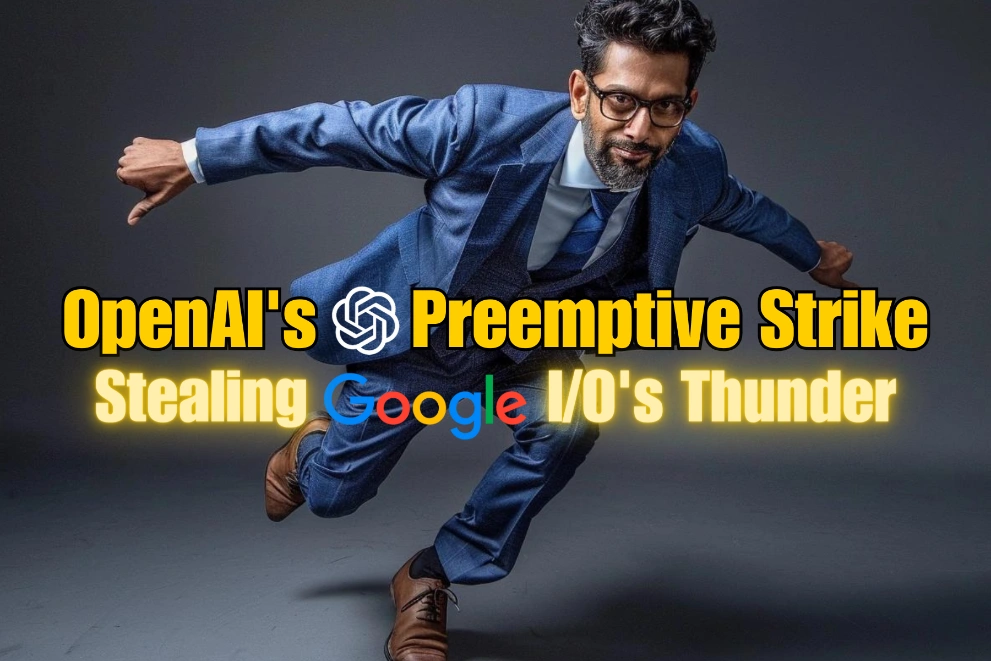There was a time when Google’s name was practically synonymous with cutting-edge AI. But in the last year, OpenAI has jolted the conversation in its favor, overshadowing Google IO and becoming the go-to reference for forward-thinking AI. Whether it’s chatbots, text-to-image generation, or advanced language models, OpenAI’s iterative releases have captivated the market while Google finds itself playing catch-up.
This shift isn’t merely about technology—it’s about seizing user mindshare, winning investor confidence, and redefining marketing strategies. With each breakthrough, OpenAI challenges conventional industry practices and forces established giants to innovate faster.
The Great AI Tug-of-War
In the race for AI supremacy, Google has long dominated with its extensive research labs and vast resources. Its innovations have transformed products like search and translation, relying on established user bases and incremental improvements. However, Google IO is often weighed down by regulatory scrutiny and the challenges of scaling new ideas across billions of users.
Meanwhile, OpenAI has emerged as a nimble contender by rapidly releasing groundbreaking models, engaging the tech community, and generating substantial media buzz. Global venture capital investments in generative AI have surged—with OpenAI at the center of much of that momentum. In essence, the battle has evolved from technology specs to winning trust and capturing public attention in a crowded market.
Why OpenAI Stole the Spotlight from Google IO
Much of OpenAI’s success comes from its accessible approach. By launching GPT-powered tools with freemium models and competitive subscription plans, OpenAI quickly built a massive and engaged user base. The company’s high-impact partnerships and strong investor backing have further strengthened its position. In contrast, some of Google’s advanced AI features remain confined to select product lines or limited rollouts.
This deliberate accessibility, combined with consistent media exposure and a focus on rapid iteration, has allowed OpenAI to dominate headlines and shift the industry narrative. For marketers, this means the bar for innovation is set higher—insisting on agility, transparency, and a direct connection to real user needs.
Did Google IO Fumble or Evolve?
It would be simplistic to say Google fumbled entirely; rather, its approach is evolving. Google’s extensive infrastructure and user-first ethos demand rigorous testing and phased rollouts, which sometimes stifle the bold moves that capture headlines. The company’s deep pockets enable massive R&D investments, yet internal silos and regulatory pressures often slow down its innovation cycle.
While Google continues to develop impressive AI capabilities across diverse sectors—from self-driving tech to enterprise cloud services—its cautious deployment has allowed OpenAI’s more agile strategy to capture the public’s imagination. The question remains whether Google’s measured evolution can eventually match the disruptive pace of its challenger.
Looking for ROI-driven marketing strategies? Reach out to SuperMassive Agency for your personalized AI roadmap.
Key Marketing Lessons from the Tech Giants
- Data-Driven Execution Beats Flashy LOI
At its core, success in AI marketing is anchored by robust data insights. Rather than chasing every shiny new feature, prioritize tools and approaches that directly drive measurable outcomes, such as lead generation and conversion. - Build Trust at Every Step
AI can augment marketing strategies, but trust remains paramount. As consumers interact with AI-driven recommendations and chatbots, transparency around data use and privacy becomes essential. Clearly communicate your processes to build lasting relationships. - Embrace Generative Engine Optimization (GEO)
As AI reshapes how users discover content, optimize your brand for generative search experiences. This means tailoring your content to be easily ingested and repurposed by AI models—making your marketing both discoverable and engaging. - Partnerships and Ecosystems Matter
OpenAI’s success is bolstered by strategic alliances and integrated solutions. Marketers should consider similar partnerships to amplify campaign reach and streamline operations, ensuring a comprehensive approach to AI adoption. - Pivot Fast, Then Pivot Again
In the rapidly changing AI landscape, agility is key. Regularly reassess your strategies, adopt new technologies swiftly, and continuously refine your messaging. Being adaptive isn’t optional; it’s the only path to sustained success.
Conclusion
Google’s long-standing dominance in AI has been challenged by an agile upstart that proved innovation can come from anywhere. OpenAI’s bold, accessible approach has redefined what it means to lead in AI, and marketers are taking note. This AI tug-of-war offers critical lessons: focus on data-driven strategies, build genuine trust, and optimize for an emerging generative landscape. In a world where every digital interaction matters, standing still is not an option.
Ready to dominate the AI marketing arena? Visit us online or email [email protected] for next-level support.
FAQ
Q: What is driving OpenAI’s rapid momentum?
A: OpenAI’s democratized releases, ecosystem-building strategy, and strong investor partnerships enable agile advancements that keep it in the spotlight.
Q: How can marketers adapt to the AI revolution?
A: Marketers should adopt data-driven approaches, leverage generative content, and develop trust architectures to stay ahead in AI-driven search and discovery.
Q: Are Google’s AI developments still relevant?
A: Absolutely. Despite its cautious pace and regulatory challenges, Google continues to innovate across various sectors. Its robust ecosystem remains a key player in the evolving AI landscape.
Stop wasting time. Start driving results. Ready to dominate? Visit us online or email [email protected] for next-level AI marketing support.




